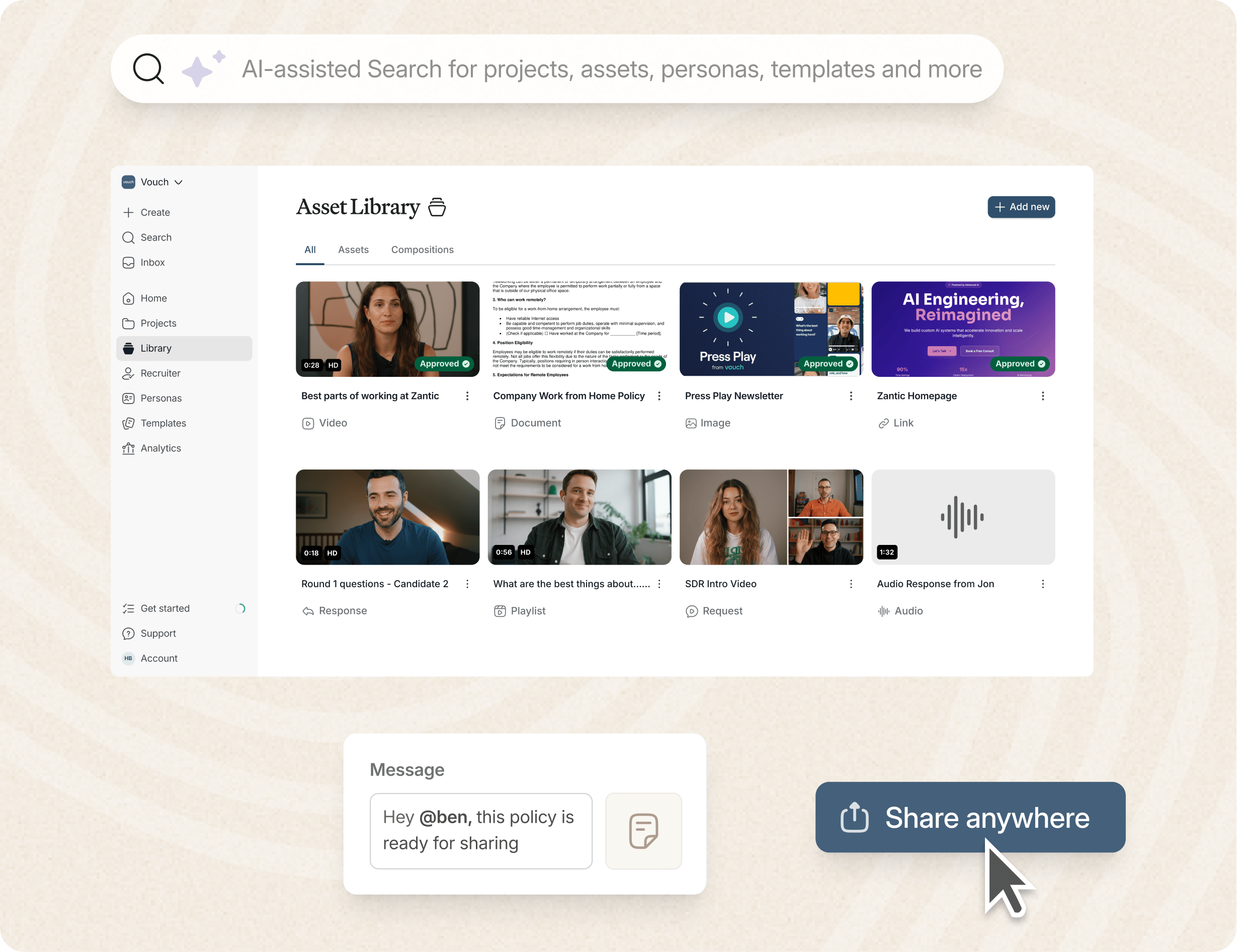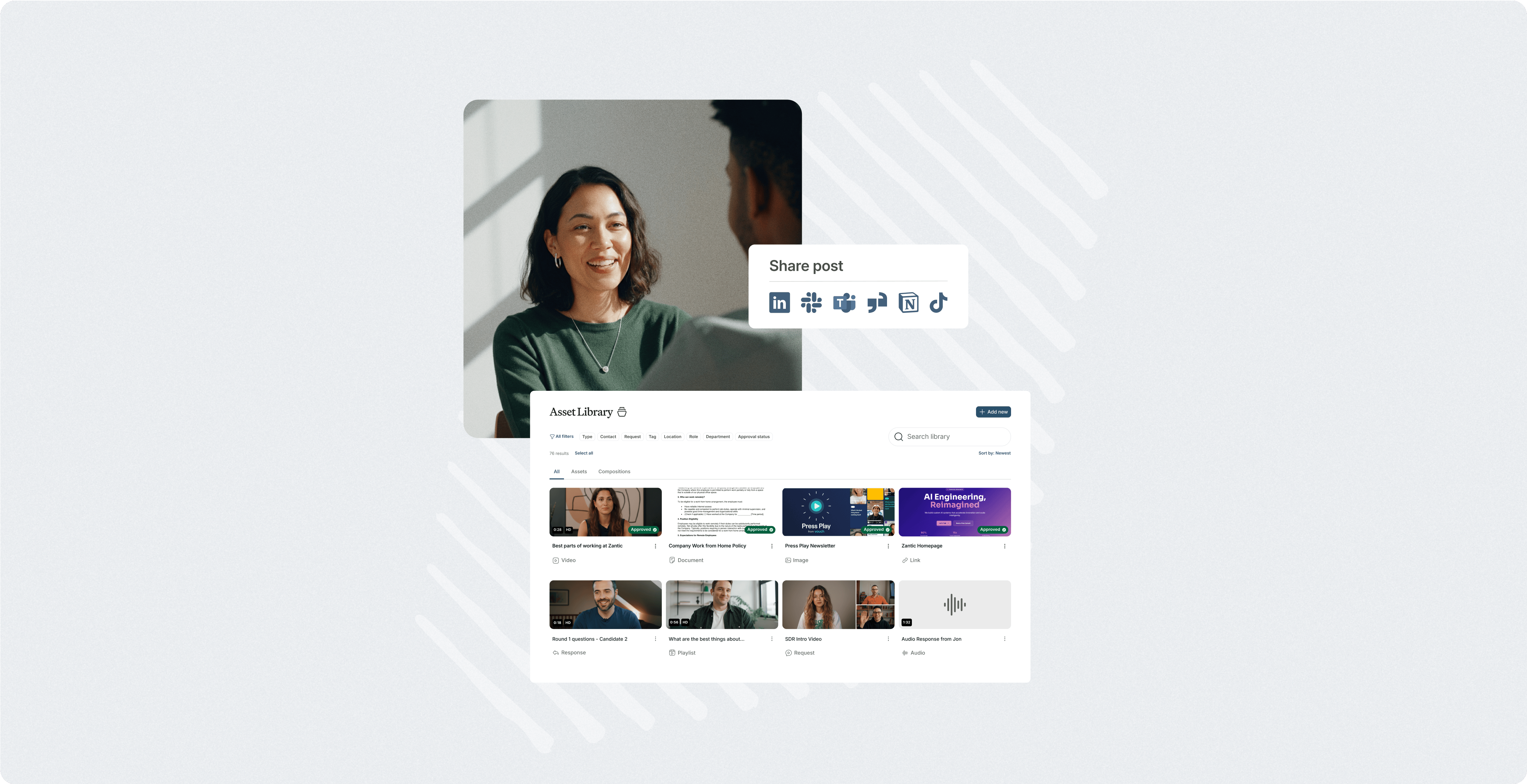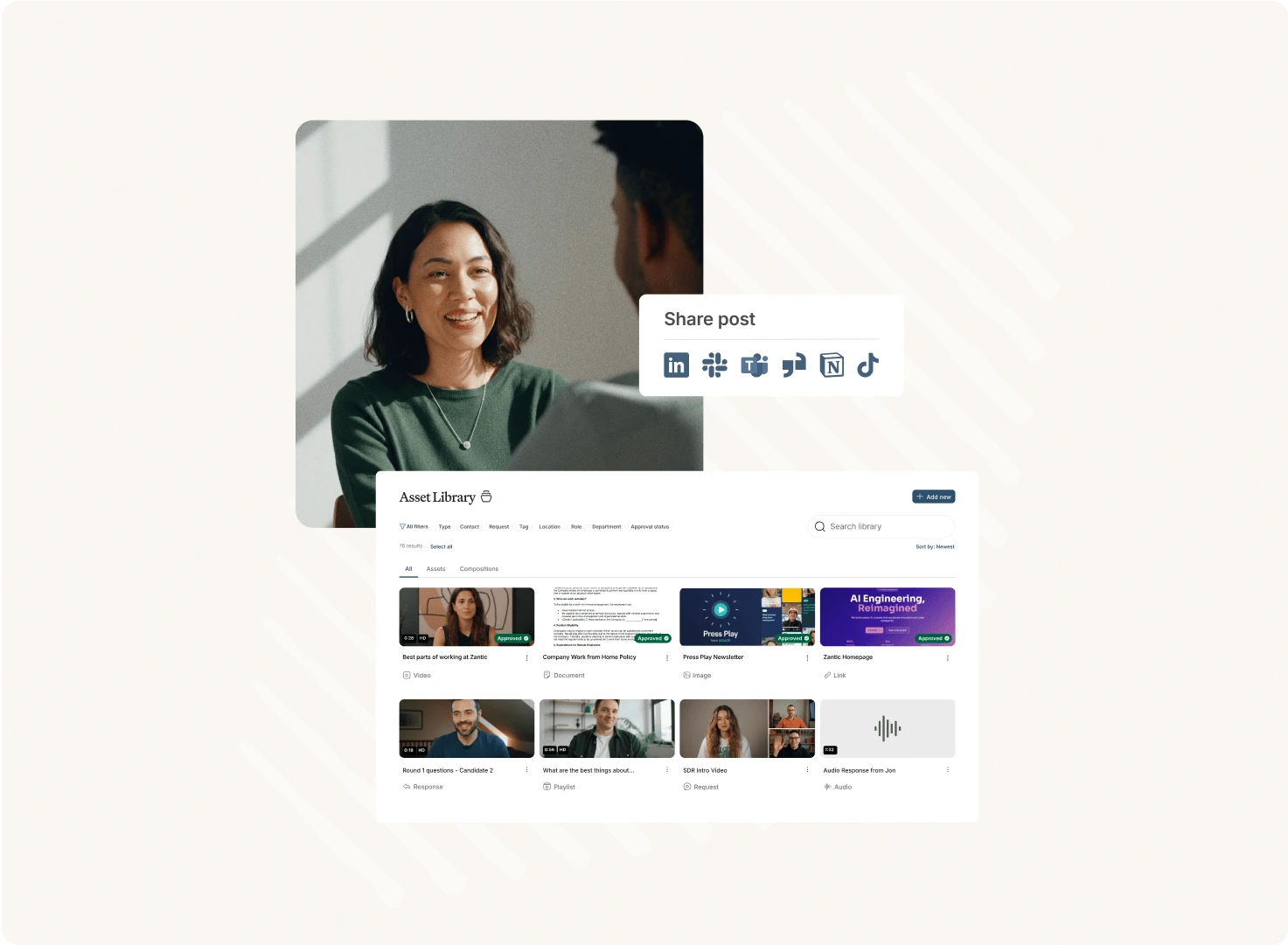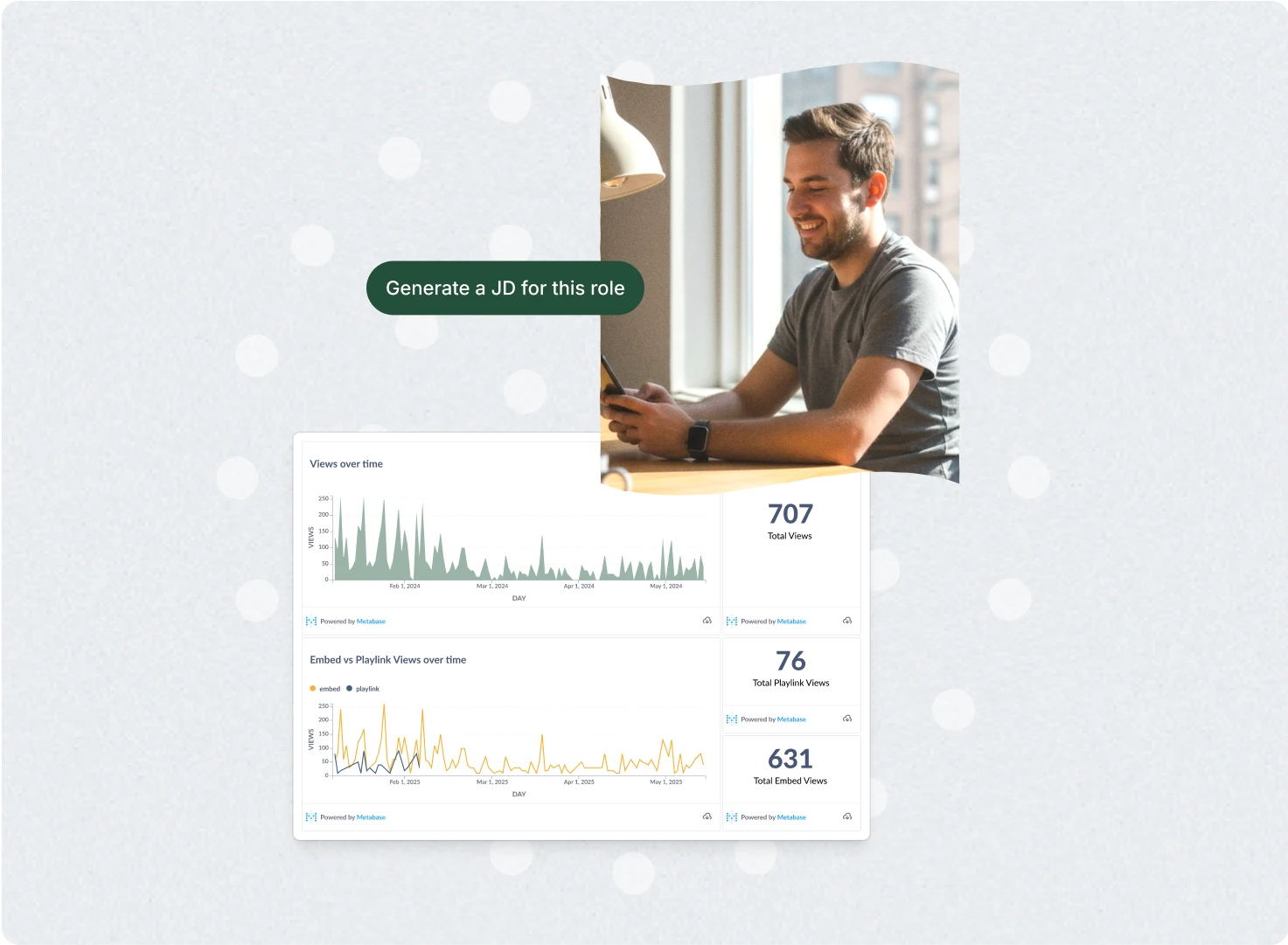Employee referrals are a hidden gem in the recruiting world.
They're a cost-effective way to tap into high-quality talent, streamline the hiring process, and improve company culture.
But here's the kicker: many companies still don't know how to fully unlock the potential of their employee referral programs.
In this article, we'll break down 5 proven methods to boost employee referrals and share why they're such an effective hiring strategy in 2026.
So, let's get started:
1. Make Your Referral Program Easy and Rewarding
It sounds simple, right? But you'd be surprised how many companies overcomplicate their employee referral program, making it hard for current employees to engage.
The biggest factor to building your employee referrals, is making it easy to do. Here's how:
Step 1: The referral process should be quick, mobile-friendly, and intuitive. Employees should be able to refer candidates with a few clicks, whether they're at their desks or using a mobile device. Look into employee referral software platforms, which streamline the process and track employee referrals.
Step 2: Offer Clear, Tangible Rewards. While employee referral bonuses are common, make sure your incentives feel rewarding enough. According to 2025 data, the average employee referral bonus in the U.S. is around $2,500. Monetary bonuses work, but offering a wide range of options like gift cards, extra vacation days, or experience-based rewards can increase engagement across your teams. Vouch can really help you communicate with your team too!
Step 3: Keep employees updated on the status of their referrals with automated messages or simple calendar-sharing tools to reduce any admin time on your recruiting teams' end.
The AI-enabled workspace for talent teams.
- Unified workspace for talent teams
- Accelerate hiring with AI tools
- Auto-generate polished hiring and employer brand content
- Easily repurpose assets across all channel

2. Integrate Employee Referrals Into Your Company Culture
To build a successful employee referral program, employee engagement is key.
Referrals shouldn't feel like an add-on task; they should be part of the company's DNA - you essentially want your team to be talent scouting for you through their own network, social and peers!
Step 1: Create a referral-friendly environment where your employees to feel like referring their friends and connections is both valued and encouraged.
Step 2: Using tools like Vouch, highlight success stories where referred candidates have become top performers. When your senior leadership speaks highly of referrals, it sets the tone for the whole organization.
Step 3: Make Referrals Fun and Social - even consider hosting "Referral Days" where employees can meet with your talent acquisition and recruiting teams to review open positions and find matches in their network. Make it social by adding some light competition—reward employees who bring in the most referrals during the event.
3. Align Referral Incentives with Hard-to-Fill Positions
While referrals for general positions are great, it's often best to focus on high-quality talent for tough roles with hard-to-find skills.
This is also where you can optimize the ROI of your employee referral program.
Step 1: Prioritize high-impact roles and offer higher referral bonuses for positions that are critical to your company's growth or are typically hard to fill. This encourages employees to dig deeper into their networks to find qualified candidates with niche expertise.
Step 2: Ensure your employees know which positions are open. Most employees won't be aware of your company's current vacancy list unless it's clearly communicated. Send out regular updates via company intranets, emails, or even during team meetings.
According to LinkedIn's 2026 Global Talent Trends report, 32% of companies with employee referrals increased their referral bonus for hard-to-fill positions. These companies saw 20% faster fill times for those roles compared to using traditional job boards.
Step 3 For the most specialized roles like AI engineers, look at recruiting or poaching employees who have professional networks in those fields. For instance, AI engineers will likely know other engineers who are passive candidates.
4. Leverage Alumni and External Networks
Your current employees aren't the only ones who can help find top talent.
Leveraging alumni networks and external professional networks like those on LinkedIn is a powerful addition to your referral strategy.
Step 1: Engage alumni including former employees who left on good terms can be great sources of quality referrals. Many times, these ex-employees know people in their field who would be a perfect culture fit and match your job requirements.
Step 2: Create a dedicated referral bonus for alumni and encourage them to refer candidates through your employee referral program today.
Step 3: Tap Into Industry Networks. Encourage employees to attend industry events or participate in online professional networks like LinkedIn groups or Slack channels. These are prime areas to meet talented people who may be open to new opportunities.
5. Track Metrics and Optimize Over Time
Like with other recruitment metrics, tracking the success of your referral efforts is key to ensuring that your program remains effective.
Step 1: Track Key Metrics. Monitor important metrics like cost per hire, quality of hire, and referral pass-through rates. According to Jobvite's 2026 Recruitment Benchmark Report, companies that actively track these metrics saw a 15% higher quality of hire compared to those that don't.
Step 2: Adjust Based on Data. Use the data you collect to tweak your program. For example, if you notice a low number of inbound referrals, revisit your communication channels. Maybe employees don't know how to submit referrals, or the rewards are too low to incentivize action.
By constantly optimizing, you'll ensure your referral program evolves with your recruitment strategies.
Who Are 10 Leading Companies Who Leverage Employee Referrals?
Employee referrals are extremely powerful, and most of our Vouch clients leverage employee referrals.
Here are 10 leading global companies that actively leverage employee referrals as a core part of their recruitment strategy:
1. Google
- Referral Bonus: Google offers generous bonuses for successful employee referrals.
- Why It Works: High standards and internal incentives lead to quality hires and cultural alignment.
2. Accenture
- Global Reach: Uses referrals across its global workforce for better retention and diversity.
- Programs: Internal tools track referral status and reward participation.
3. Salesforce
- “Bring Your Friends to Work”: Regular campaigns and events boost internal referrals.
- Success Rate: Referred hires often perform better and stay longer.
4. Intel
- Incentives: Higher bonuses for hard-to-fill roles.
- Diversity Angle: Focuses on increasing diverse hires through employee networks.
5. IBM
- Tech-Enabled: Uses AI to connect employees’ contacts with job openings.
- Employee Engagement: Referrals count toward internal performance metrics.
6. Adobe
- Culture Match: Prioritizes culture-fit in referred candidates.
- Monetary Bonuses: Attractive incentives for technical role referrals.
7. Amazon
- Efficiency Focused: Metrics-driven tracking of referral effectiveness.
- Fast-track System: Referred candidates often move quicker through the hiring funnel.
8. LinkedIn
- Model Recruiters: Practices what it preaches by leveraging internal referrals heavily.
- Gamification: Engages employees with point systems and leaderboards.
9. Deloitte
- “Talent Scout” Program: Branded internally to encourage pride and ownership.
- Alumni Network: Taps into former employees to widen referral net.
10. Facebook (Meta)
- Heavy Referrals: A significant portion of engineering hires come from referrals.
- Focus on Quality: Referrals are prioritized due to high success and retention rates.
FAQs
How do I start an employee referral program?
Begin by creating a simple, user-friendly process and clearly communicate the benefits to your employees. Tools like Vouch help you communicate with your team.
What's the average employee referral bonus in 2026?
It's around $2,500, but bonuses for hard-to-fill positions can go higher.
How do I encourage employees to refer candidates?
Offer clear rewards, keep the process easy, and celebrate successful referrals publicly.
Can employee referrals help with diversity goals?
Yes, but be careful of unintentional biases. Actively source diverse candidates through referrals and external networks.
How do referrals affect recruitment costs?
Employee referrals can reduce overall recruiting costs and shorten the average hiring time.
What's the biggest benefit of employee referrals?
Referrals tend to bring in high-quality candidates who are a good culture fit and have higher retention rates.
Can alumni refer candidates?
Absolutely! Engaging your alumni network is an often overlooked but valuable source of quality referrals.
Conclusion
Building a successful employee referral program doesn't happen overnight, but with these five methods, you'll be well on your way to filling your talent pools with high-quality candidates. From making the referral process simple to aligning incentives with your most critical positions, it's all about making referrals easy, rewarding, and a core part of your company culture.
When done right, referrals are a cost-effective way to recruit talented individuals who already have a connection to your company. This makes them more likely to be a great fit and stay long-term.
Vouch Helps You Build Employee Referrals
Loved by companies like Canva, Nike, Cisco, HubSpot, Amazon and more, tools like Vouch make leveraging video in your business remarkably easy.
Be sure to book a Vouch demo today and chat with a video content expert.
You might also like

Elevate Your Brand Today With Vouch
Discover how Vouch can accelerate talent acquisition while helping you stay on-brand.






